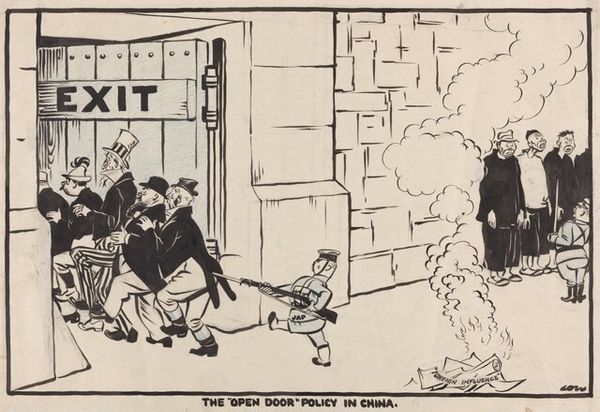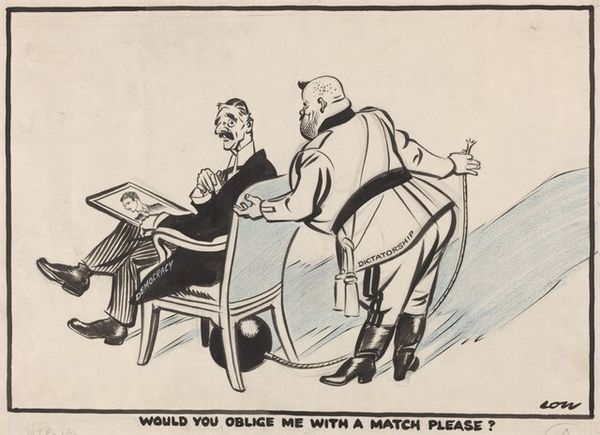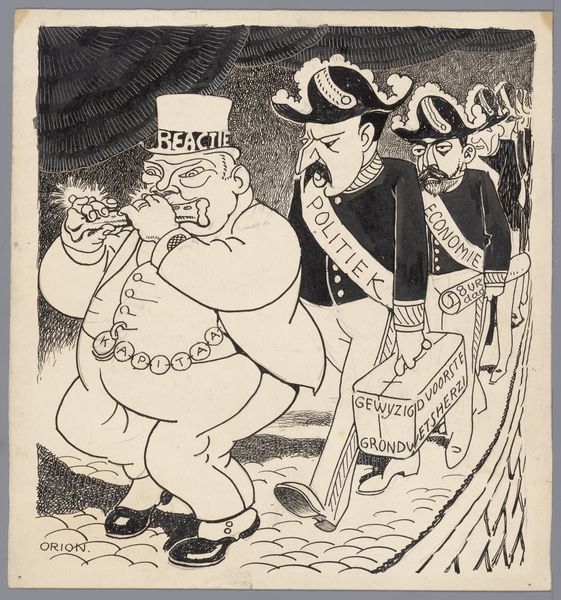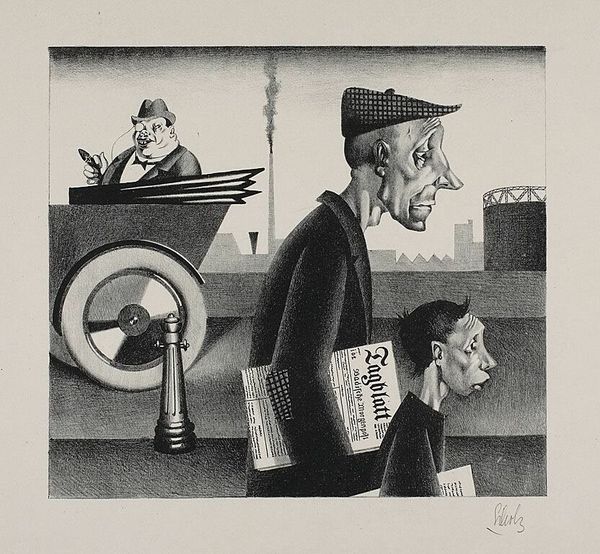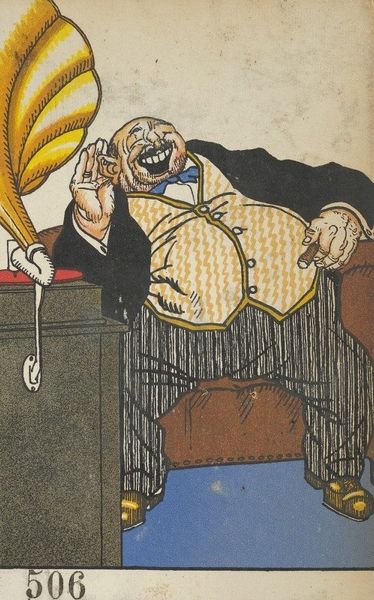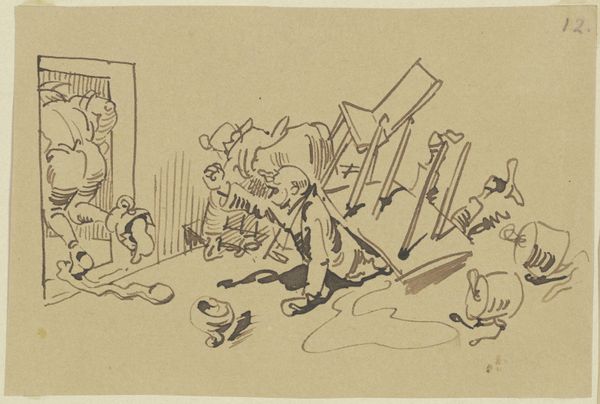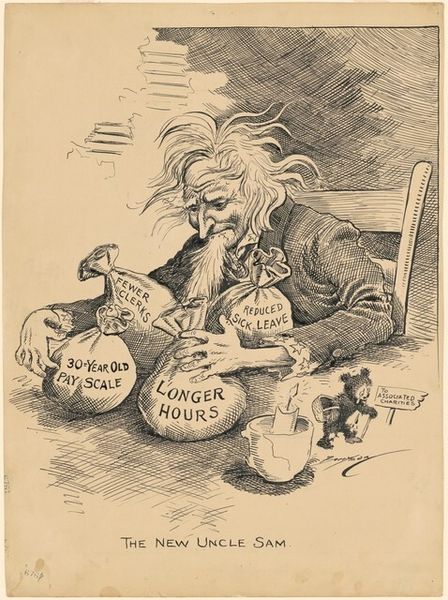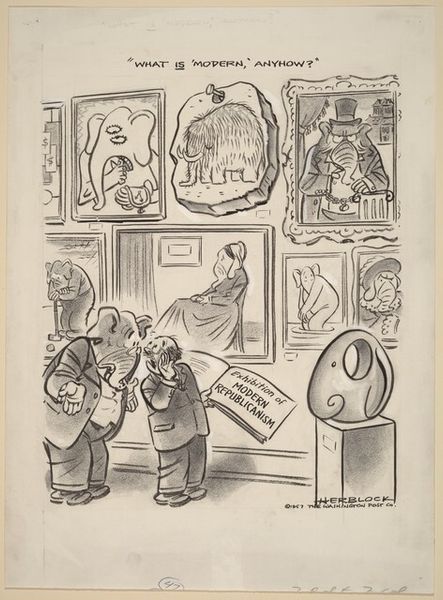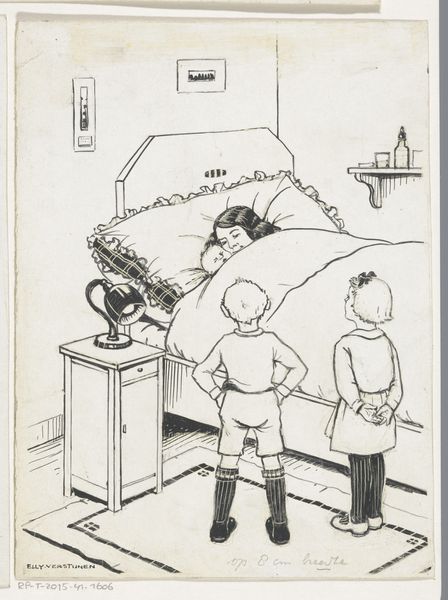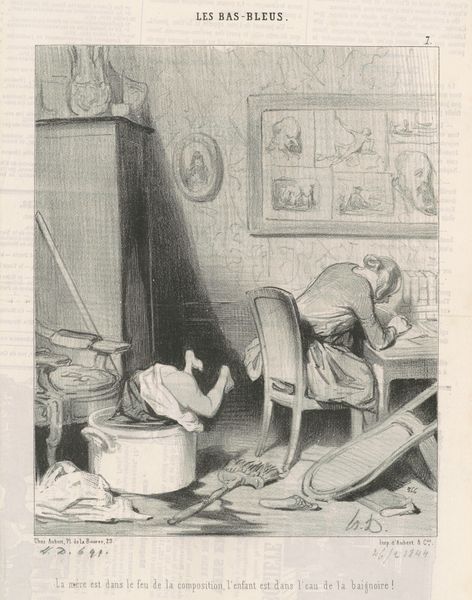
drawing, paper, ink
#
drawing
#
comic strip sketch
#
narrative-art
#
caricature
#
caricature
#
cartoon sketch
#
paper
#
ink
#
comic
Dimensions: overall (approximate): 36.5 x 51.9 cm (14 3/8 x 20 7/16 in.)
Copyright: National Gallery of Art: CC0 1.0
Curator: This ink drawing, entitled "The Old Man of Doorn," was created in 1938 by David Low. It offers a scathing commentary on interwar Europe. What do you make of it? Editor: There's a wonderful looseness to the lines, creating a sense of nervous energy, almost agitated. The monochrome palette adds to the somber mood, but it's undeniably effective. Curator: The cartoon references Kaiser Wilhelm II, exiled in Doorn, Netherlands, after WWI. Look at the portrait and the "1914" book on the desk. Low uses this to frame rising tensions. The man's weary pose, surrounded by alarming headlines, captures the collective anxiety before WWII. Editor: I notice how Low contrasts textures to great effect— the smoothness of the furniture against the scribbled mess of papers, and the old man's wrinkly, drooping features. Notice the bold and thick ink outline of the cartoon, very impactful. Curator: The newspapers are crucial. Headlines like "Germany Demands Favorable Solution" represent the appeasement policies towards Hitler, with clear implications for Europe as a whole. It is rife with foreshadowing. Editor: Visually, the leaning stance of the man with the exaggeratedly tired stance and facial expression dominates, almost overflowing his armchair. He's practically being suffocated by the newsprint! It accentuates a feeling of impending doom. Curator: Low, a staunch anti-fascist, published this in the Evening Standard. Cartoons like this played a pivotal role in shaping public opinion, offering sharp critique under the veil of satire during a very precarious political landscape. Editor: Well, the dynamism is clear. Even in still form, the artist perfectly communicates this palpable apprehension toward repeating the atrocities from only two decades earlier. Curator: Absolutely. Low masterfully used caricature and comic conventions to broadcast warnings about history poised to repeat itself. Editor: It shows how formal elements such as line and composition serve the cartoonist's overall goal of social and political criticism. It's an important case study.
Comments
No comments
Be the first to comment and join the conversation on the ultimate creative platform.
